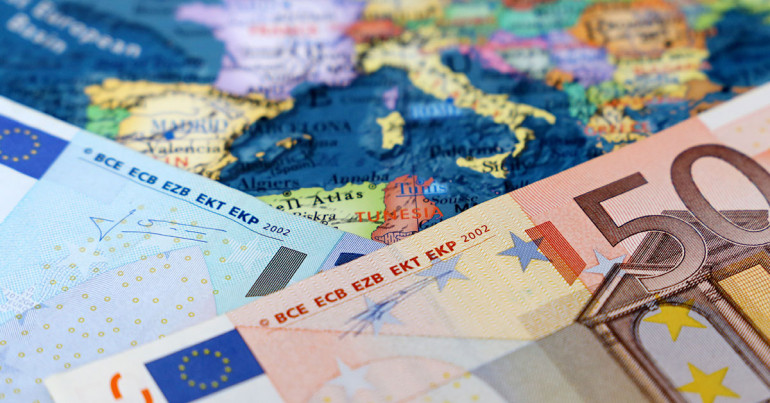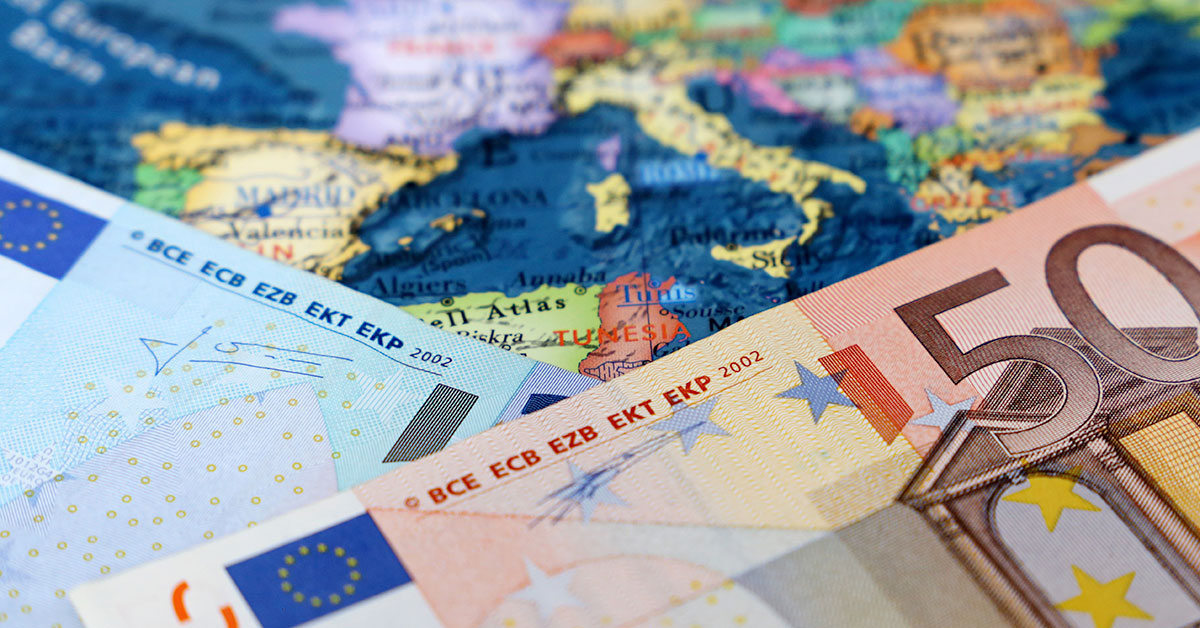
The Eurozone crisis, also known as the European sovereign debt crisis, was a multi-year crisis that took place in the EU in 2009, and it lasted until late 2010, at least on paper. A lot of people think that the crisis is still ongoing, and in some cases, people still think that the crisis is continuing, albeit at a slower pace.
In this article, we uncover the causes behind the eurozone crisis, and address the suggestions that a crisis may still be ongoing.
What caused the Eurozone crisis?
What’s interesting to note about this crisis is that it was generated by a balance of payments crisis. The idea here is that there was a sudden stop of foreign capital flow for countries with deficient economies, and who were relying on foreign funds. Not only that, but the crisis got worse because the states were unable to use devaluation since the euro was their shared currency.
Additionally, other causes brought this issue as well. The Great Recession also ended up causing severe issues as well and contributed to the structural deficit while increasing debt levels. Multiple countries ended up going through this crisis – most notably Greece, Cyprus, Portugal, Spain, and Ireland.

Do we still have a Eurozone crisis now?
It depends on how we define a Eurozone crisis in today’s environment. Obviously, circumstances were a lot different back then, especially with the Great Recession playing a major factor. However, we could say that we are dealing with a Eurozone crisis right now as well. The most challenging situation here is that prices have gone up for pretty much everything.
And it’s not just energy prices; we are talking about food, mortgages, and rent, along with other challenges. All of these end up making things more difficult for people just because there are so many demanding situations at this time.
When we do a year to year comparison, the eurozone economy contracted 0.1% between January and March of 2023, and it even shrank after that a little bit. So there is a sign of recession, and the Euro to USD history shows that as well, although the rate has fluctuated quite a bit during the year. There’s also the HCOB Composite Purchasing Manager Index as well. What this does is it measures business conditions based on multiple criteria. The criteria here include purchasing activity, selling prices, employment, but also new orders.
The PMI index for the Eurozone was 47.1 in November. Just so we understand its meaning, any number under 50 showcases economic contraction, whereas numbers over 50 show expansion. The PMI index remained under 50 for 8 months straight, which does show that the economy is not at its best, at least not for the time being.
Other factors for a Eurozone crisis
Of course, there are a plethora of other indicators that we need to check in order to understand the current state of the European economy. The lending activity of banks is a prime example, too. A lot of people are wondering will the euro collapse, and that’s always something up for debate.
However, looking at the lending activity does help quite a bit. If loans are disbursed, that shows a powerful economy, while the opposite shows otherwise.
So, how was the lending activity for 2023? In October 2023, business loans were 0.3 lower when compared to the previous year. It’s important to note that this was the first yearly fall that happened since 2015, which is something to keep in mind here. There is a stress of loan defaults on the rise right now. And with the EU lowering the growth forecast from 0.8% to 0.6%, that’s also an indication that things are not going as well.
Aside from that, there are other worries to focus on as well. Things like a very volatile world economy, along with higher energy prices and increased interest rates, are constantly adding to the pressure. Bank estimates at this time show that the Eurozone GDP will be 1% lower, which is definitely not a good sign in any way.
What does the future hold for the Eurozone?
The Eurozone is certainly dealing with a lot of pressure, and most of that stems from energy prices. Geopolitical tensions are constantly fueling the energy price increase. With that in mind, the inflation is tamed a little, but it’s still over the five-year average, so that on its own is a major concern. Also, according to the latest IMF economic update, we might actually see a bit of a recovery for the Eurozone, at least in 2024.
Although the previous year was not as good when it came to the GDP, the IMF still estimates a GDP growth of 1.5%, which is not the best, but it’s better than expected. With that in mind, this does come with a certain caveat. That means the gas and oil prices will not surge; instead, they will remain stable. Plus, it’s also assumed that any geopolitical conflicts will not affect the Eurozone which is very difficult to know and estimate.
Retail sales are down
Even if the future might seem to improve this current situation, there are some downsides, too. When we focus on the consumer side of things, there is no specific trend that encourages people to spend. In fact, people within Europe tend to be more mindful when it comes to what they spend their money on, at least for the time being.
It’s also important to note the Eurozone itself is dealing with a slowdown, and that was accelerated mostly due to a lower demand in the service sector. The PMI orders are also at their lowest since 2012. All of that does show that we are going through a recession, and while there is quite a difference from what happened in the US, lines are still quite blurry here.
We can also add to that the fact that manufacturing activity is lower, it actually fell at the lowest rate since 1997. Despite that, many analysts state that the Eurozone will not go into a complete recession. But it will surely feel some of the downsides, and it might not be alone in that. The US might also end up going through a recession very soon, with numerous signs pointing towards that direction.
According to Allianz Trade, the European recession will also continue throughout the summer, which is indeed a possibility. As we mentioned earlier, the growth prospects are very minimal, 0.8% at best, if not lower than that. There are also a few other, key factors that are fueling this potential recession and crisis too. We have electoral uncertainty in many countries, ongoing wars in or around Europe, along with high interest rates and inflation.

Conclusion
So, are we still in the Eurozone crisis? The short answer is no; that particular crisis ended over a decade ago. However, the Eurozone economy is not at its best, and we are close to a potential recession within the Euro region. And, as we mentioned earlier, it seems that the US is also close to dealing with such an issue, considering how the economy was in 2024.
There’s still hope that things will improve and get better, but only time can tell when it comes to that. We still remain very optimistic that the Eurozone can get past these potential hurdles, although there are still plenty of factors beyond European control that might have an influence in the years to come.
For more articles on currency and economics, make sure to stay posted on our weekly articles at CurrencyTransfer in our Expert Analysis section. We also post daily updates on the market with our Market Commentary.
Sign up for an account with CurrencyTransfer today for free, and you’ll be assigned an account manager who will help you every step of the way.
Caleb Hinton
Caleb is a writer specialising in financial copy. He has a background in copywriting, banking, digital wallets, and SEO – and enjoys writing in his spare time too, as well as language learning, chess and investing.



